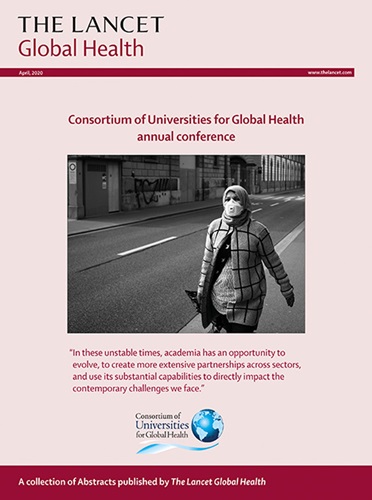Impact of the 100 days mission for vaccines on COVID-19: a mathematical modelling study.
IF 19.9
1区 医学
Q1 PUBLIC, ENVIRONMENTAL & OCCUPATIONAL HEALTH
引用次数: 0
Abstract
BACKGROUND The COVID-19 pandemic has underscored the beneficial impact of vaccines. It also highlighted the need for future investments to expedite an equitable vaccine distribution. The 100 Days Mission aims to develop and make available a new vaccine against a future pathogen with pandemic potential within 100 days of that pathogen threat being recognised. We assessed the value of this mission by estimating the impact that it could have had on the COVID-19 pandemic. METHODS Using a previously published model of SARS-CoV-2 transmission dynamics fitted to excess mortality during the COVID-19 pandemic, we projected scenarios for three different investment strategies: rapid development and manufacture of a vaccine, increasing manufacturing capacity to eliminate supply constraints, and strengthening health systems to enable faster vaccine roll-outs and global equity. Each scenario was compared against the observed COVID-19 pandemic to estimate the public health and health-economic impacts of each scenario. FINDINGS If countries implemented non-pharmaceutical interventions (NPIs) as they did historically, the 100 Days Mission could have averted an estimated 8·33 million deaths (95% credible interval [CrI] 7·70-8·68) globally, mostly in lower-middle income countries. This corresponds to a monetary saving of US$14·35 trillion (95% CrI 12·96-17·87) based on the value of statistical life-years saved. Investment in manufacturing and health systems further increases deaths averted to 11·01 million (95% CrI 10·60-11·49). Under an alternative scenario whereby NPIs are lifted earlier on the basis of vaccine coverage, the 100 Days Mission alone could have reduced restrictions by 12 600 days (95% CrI 12 300-13 100) globally while still averting 5·76 million deaths (95% CrI 4·91-6·81). INTERPRETATION Our findings show the value of the 100 Days Mission and how these can be amplified through improvements in manufacturing and health systems equity. However, these investments must be enhanced by prioritising a more equitable global vaccine distribution. FUNDING Schmidt Science Fellowship in partnership with the Rhodes Trust, WHO, UK Medical Research Council, Coalition for Epidemic Preparedness Innovations.疫苗百日任务对 COVID-19 的影响:数学模型研究。
背景 COVID-19 大流行凸显了疫苗的有益影响。它还凸显了未来投资加快疫苗公平分配的必要性。百日任务 "的目标是在未来具有大流行潜力的病原体威胁被确认后的 100 天内,开发并提供针对该病原体的新疫苗。我们评估了这一任务的价值,估算了它对 COVID-19 大流行可能产生的影响。方法我们利用以前发表的 SARS-CoV-2 传播动态模型与 COVID-19 大流行期间的超额死亡率相匹配,预测了三种不同投资策略的情景:快速开发和制造疫苗、提高制造能力以消除供应限制,以及加强卫生系统以加快疫苗推广和实现全球公平。每种方案都与观察到的 COVID-19 大流行进行了比较,以估计每种方案对公共卫生和健康经济的影响。研究结果如果各国像历史上一样实施非药物干预措施(NPIs),"百日任务 "估计可以在全球范围内避免 800 万到 3300 万人死亡(95% 可信区间 [CrI] 7-70-8-68),其中大部分是中低收入国家。根据统计寿命年数节省的价值,这相当于节省了 14-35 万亿美元(95% 可信区间 [CrI] 12-96-17-87)。对制造业和卫生系统的投资将避免的死亡人数进一步增加到 1,100 万至 1,010 万(95% 中位数 10-60-11-49)。在另一种情况下,即根据疫苗覆盖率提前解除国家免疫方案,仅 "百日任务 "就可在全球范围内减少 12600 天的限制(95% 中值为 12 300-13 100),同时仍可避免 57600 万例死亡(95% 中值为 4-91-6-81)。然而,这些投资必须通过优先考虑更公平的全球疫苗分配来加强。资金来源施密特科学奖学金与罗兹信托基金、世界卫生组织、英国医学研究理事会、流行病防备创新联盟合作。
本文章由计算机程序翻译,如有差异,请以英文原文为准。
求助全文
约1分钟内获得全文
求助全文
来源期刊

Lancet Global Health
PUBLIC, ENVIRONMENTAL & OCCUPATIONAL HEALTH-
CiteScore
44.10
自引率
1.20%
发文量
763
审稿时长
10 weeks
期刊介绍:
The Lancet Global Health is an online publication that releases monthly open access (subscription-free) issues.Each issue includes original research, commentary, and correspondence.In addition to this, the publication also provides regular blog posts.
The main focus of The Lancet Global Health is on disadvantaged populations, which can include both entire economic regions and marginalized groups within prosperous nations.The publication prefers to cover topics related to reproductive, maternal, neonatal, child, and adolescent health; infectious diseases (including neglected tropical diseases); non-communicable diseases; mental health; the global health workforce; health systems; surgery; and health policy.
 求助内容:
求助内容: 应助结果提醒方式:
应助结果提醒方式:


